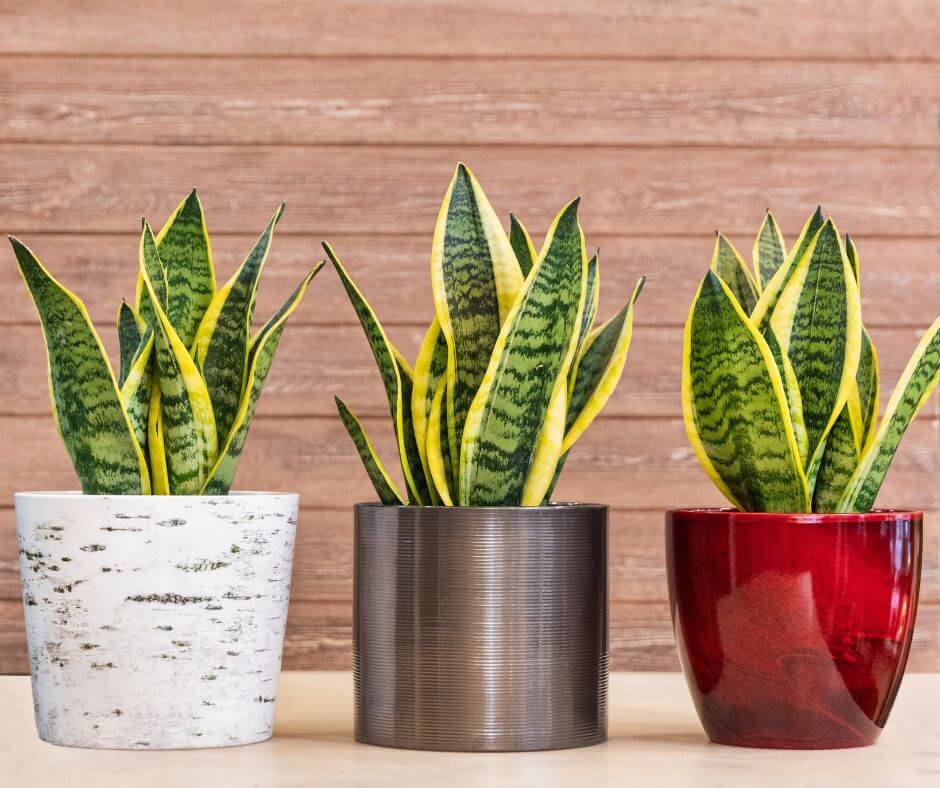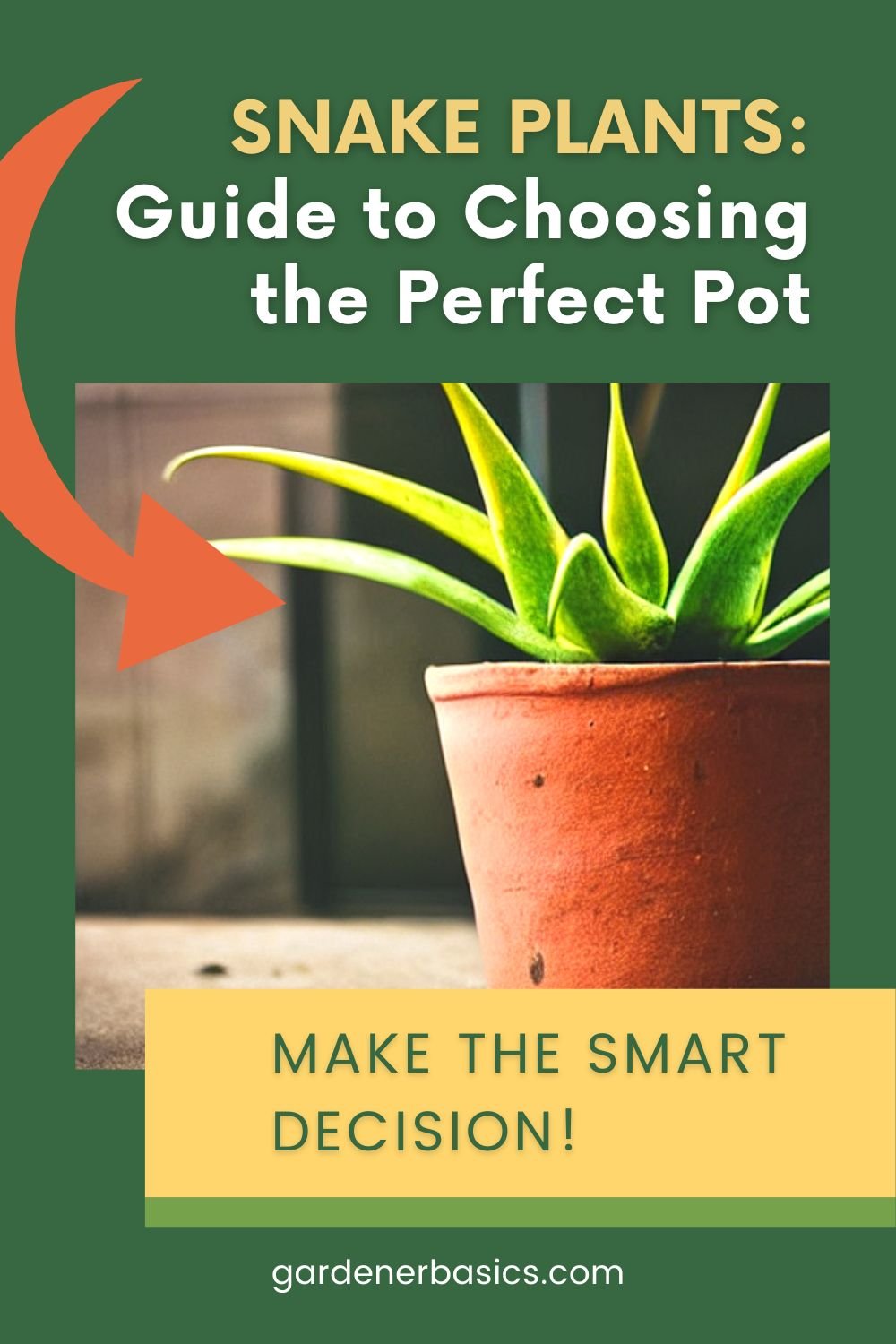The Pot of Gold: How to Pick Out the Best Pot for Your Snake Plant
Best Pot for a Snake Plant
You've just decided to add a snake plant to your home, and you want to buy a pot for your snake plant, but you're not sure which one to choose.
Snake plants are one of the easiest plants to care for, but you still need to put some thought into what pot you choose. It can be tough picking out the perfect pot for your snake plant. There are so many factors you need to consider, like size, shape, and material.
We're here to help! In this article, we'll walk you through the process of choosing the best pot for your snake plant and give you some tips on what to look for.
The items listed are accompanied by affiliate links, meaning I earn a small commission if a purchase is made through my links. This has no impact on the cost to the consumer. I link to products this way whenever possible, and it has no bearing on the products I choose to review or recommend.
What is a Snake Plant?
Snake plants are a type of succulent native to tropical and subtropical regions of the world.
They have signature leathery green leaves and some varieties have yellow or cream-colored stripes running up each leaf.
The leaves grow in an upright pattern, giving it its other name—the mother-in-law’s tongue plant!
Sansevieria trifasciata plants are widely acclaimed for their easy-care requirements and ability to thrive without too much sunlight or water.
That's why they're such a popular choice when it comes to indoor plants!
There is no shortage of options, with so many varieties available.
Benefits of Snake Plants
Aside from being easy to care for, snake plants come with a plethora of benefits. Here are just a few:
The sansevieria plant can help purify the air in your home by removing toxins like formaldehyde, benzene, and trichloroethylene. Making them great indoor plants for allergies and asthma sufferers.
A growing snake plant can help reduce stress and fatigue as well as improve your sleep quality due to the presence of oxygen in its leaves at night.
They are a hardy plant and require minimal upkeep, making them ideal for beginner gardeners.
How to Choose the Best Pot for a Snake Plant
Now that you know what a snake plant is and why it's such a great choice, let’s get into how to choose the best pot for your snake plant.
Shopping for the perfect pot for your beloved snake plant should not be taken lightly, as there are numerous components to consider.
To make sure you select the best pot for your snake plant, here are some essential elements to take into account when making a decision.
Check out snake plants on Etsy!
Material
Choosing a pot for your snake plant can be an exciting challenge - it’s best to select the material carefully, as different materials offer distinct advantages and disadvantages.
The material of the pot is essential for the health and growth of your snake plant.
Clay Terra Cotta
Clay terra cotta pots are some of the best for snake plants - the best reason being that this naturally drying material will help keep your soil from becoming too damp and over-hydrated.
Terra cotta is also fairly porous, and best suited for succulents, cacti, and other low-water-requiring plants. Additionally, terra cotta pots are inexpensive and widely available in many sizes and styles.
However, there are also some drawbacks to using this type of pot. These pots can dry out quickly, particularly if they are kept outdoors or in an area with low humidity. Additionally, a clay pot is less durable than other types of pots and can easily crack or chip when dropped or mishandled.
Ceramic
For a more polished look, ceramic pots may also be considered.
Ceramic pots come in a variety of styles, sizes, and colors. They are sturdy and long-lasting and make a great addition to any home décor.
Not only is it aesthetically pleasing, but it also provides much-needed drainage and air circulation to keep your snake plant healthy and happy.
One downside is that the material is more prone to holding water, so it is best to avoid overwatering your plant in this type of pot. A ceramic pot also tends to be more expensive than other types of containers.
Plastic
Plastic pots come with a variety of advantages: they are lightweight and durable while still being inexpensive – you can often find them in any home goods store.
On the other hand, plastic pots are not great at regulating airflow and drainage - two very important elements for a healthy snake plant.
Plastic pots will hold water longer than terra cotta or ceramic, which can eventually lead to root rot.
These pots can also quickly become heated when exposed to direct sunlight, potentially causing damage to the plant’s roots.
Furthermore, a plastic pot is not as aesthetically pleasing as other types of containers and will not add any character to your space.
Concrete
If you're looking for something sturdy and lasting, then a concrete pot might be your best bet.
Concrete pots come with plenty of advantages; they tend to have great insulation properties, providing the ideal environment for snake plants, and they also last longer than many other materials out there.
Of course, it also looks nice and provides that rustic charm that can instantly give any part of your home extra personality!
However, there are some things that must be considered when it comes to choosing a concrete snake plant pot - they can be a bit heavier than other materials, so if you ever need to repot your snake plant or move it around, it might be quite a work-out!
Additionally, given their porous nature, you may find yourself needing to water them more regularly over time in order to keep their soil from drying out completely.
Size
When it comes to picking the perfect pot for your snake plant, size matters!
When selecting a pot for your snake plant, choose one that is wide instead of deep. Snake plants have thick rhizomes which spread horizontally rather than vertically, so the container should be at least two inches wider in diameter than its current size root ball to give the roots adequate space to develop and expand.
As these plants prefer to be slightly rootbound, don't choose one too big, or else it may lead to over-watering and consequently cause root rot.
Drainage
When choosing a pot for a snake plant, it is essential to keep drainage in mind.
Snake plants prefer soil that is kept on the drier side, so having a pot with good drainage will ensure that their potting mix can drain off any lingering moisture.
Without adequate drainage, your snake plant may become prone to pests, root rot, and other diseases due to the oversaturation of water in the pot.
To ensure proper drainage, look for pots with drainage holes at the bottom.
To properly ensure the drainage of your container, adding a layer of gravel, rocks, or pebbles at the base is an ideal way to guarantee success. This will block any unnecessary water from pooling and allow for oxygen to circulate around our snake plant’s roots.
Finally, to guarantee the best drainage for your snake plant, using cactus soil is optimal. This will not only provide sufficient aeration for its roots but also ensure faster draining of water.
Make sure your pot for snake plants has sufficient drainage capabilities if you want them to stay happy and healthy!
FAQS About Snake Plants
When should you repot a snake plant?
A snake plant should be repotted every two to three years. This will help to keep it healthy and allow for adequate aeration of the roots, preventing root rot and encouraging growth.
Make sure you read this article about how to repot a snake plant if you are looking for specifics.
What is the best location for a snake plant?
Snake plants prefer bright, indirect sunlight but can tolerate lower light conditions as well. They do not need to be placed in direct sunlight and too much exposure may result in sunburn or leaf scorch.
Additionally, they should be away from any drafts and vents that could shock the houseplant.
Can I put a snake plant in a self-watering pot?
Yes, you can put a snake plant in a self-watering pot but it isn't the best option.
Snake plants prefer to dry out slightly between waterings and a self-watering pot will keep the soil constantly moist. This can lead to root rot and other issues over time.
It is best to opt for a pot with drainage holes or choose an alternative method of watering such as drip irrigation.
How to tell if snake plant needs water?
Most of the time, you can tell if your snake plant needs water by touching the top few inches of soil. If it feels dry to the touch, it’s time to water.
Additionally, if its leaves start to turn yellow and droop this can be a sign that it is thirsty and needs some additional hydration.
Do snake plants need deep pots?
No, snake plants do not need deep pots. In fact, they prefer wide, shallow containers to help promote proper drainage and discourage root rot.
Make sure you choose a pot that is at least two inches wider in diameter than its current size to give the roots adequate space to develop and expand.
The Best Pot for a Snake Plant
Keeping your snake plant happy and healthy is easy, as long as you have the right pot.
By following these tips on choosing a wide container with good drainage capabilities and using nutrient-rich soil designed for succulents and cacti that drains quickly, you’ll be able to ensure an ideal environment for your snake plants to thrive in.



















